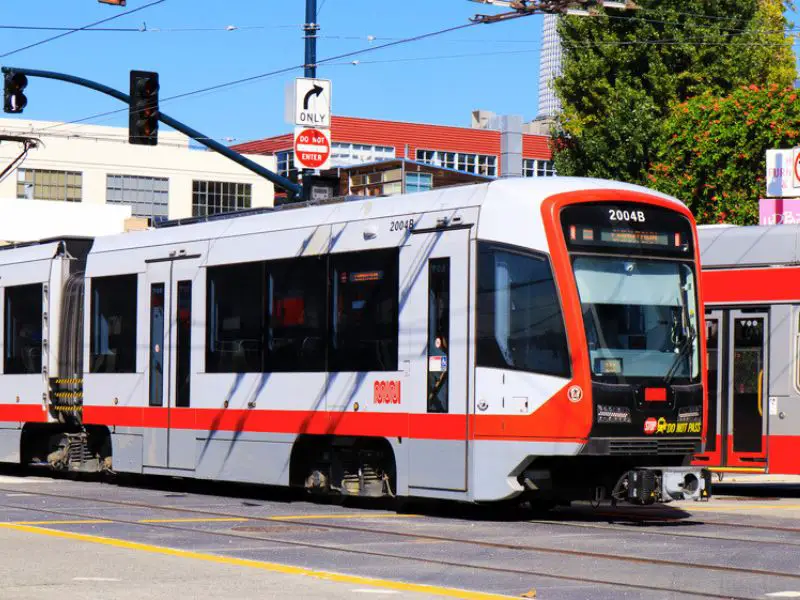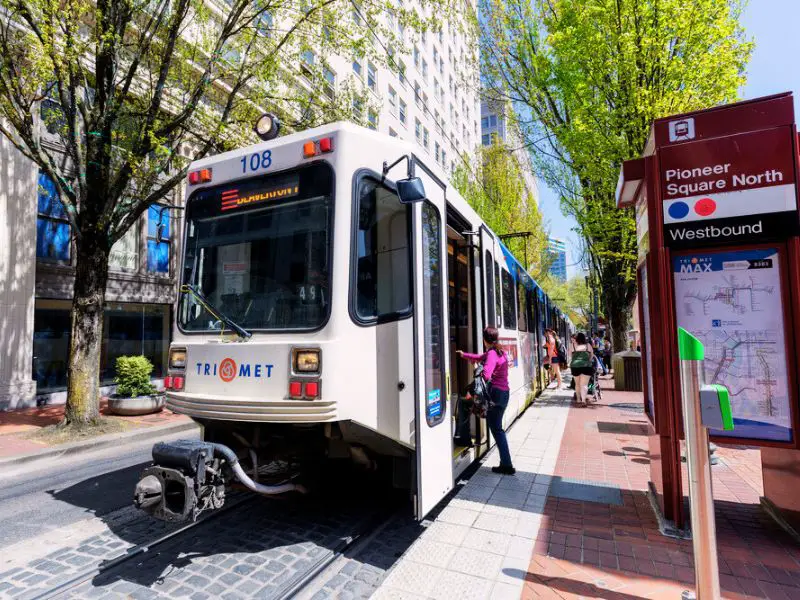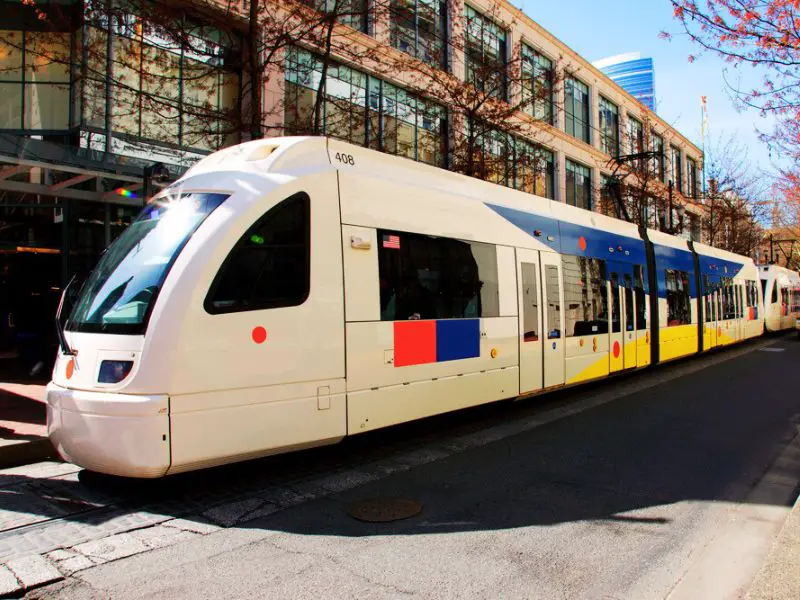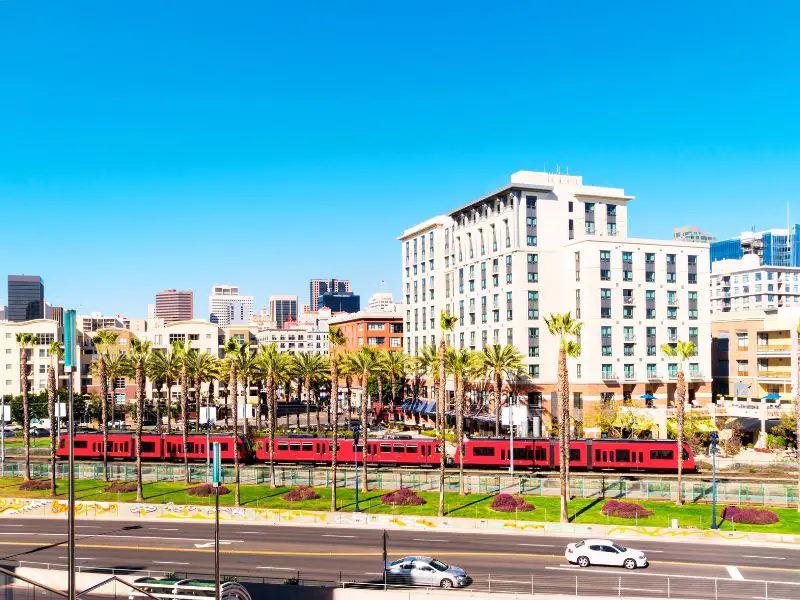If you’re anything like me, you’ve spent time marveling at the hustle and bustle that defines city life. An integral part of this urban tapestry is the light rail system – it’s pretty amazing how these networks connect different corners of a city! Now if I were to ask you: what are the best light rail systems in the US? You might pause for some thought.
Well today folks, we’re plunging headfirst into this very topic. We’ll explore why certain light rail setups stand out among others and are hailed as the best in America. So fasten your seatbelts as we prepare to embark on an exciting journey into the world of stunning infrastructure and ingenious design. Ready? Let’s dig right in!
The Best Light Rail Systems in the US: Criteria and Benchmarks
In evaluating the best light rail systems in the US, several key criteria stand out. First, we have efficiency which refers to how punctual these systems run, their frequency of service, and accessibility for all passengers. The top-ranking light rail systems ensure minimal delays during peak hours while offering frequent services throughout the day.
Next comes coverage which involves looking at each system’s geographic spread.
Systems like San Francisco’s Muni Metro or Boston’s MBTA Green Line score highly as they provide comprehensive coverage across major metropolitan areas, making them a vital part of daily commutes.

Finally, passenger comfort is considered – this includes factors such as cleanliness of cars, safety measures implemented, and customer service provided by staff. Another benchmark used to determine the best light rail systems in the US is sustainability. This primarily deals with environmentally friendly practices adopted by these transit authorities.
Light rail systems are inherently green due to reduced greenhouse gas emissions compared to other modes of transportation but some go beyond this basic advantage.
For instance, Seattle’s Sound Transit uses renewable energy sources for powering their trains whenever possible. The last set of benchmarks considers innovation and adaptation capabilities which are crucial given rapid advancements in technology and changing public demands.
This takes into account how well these light rails integrate with other transport options (like bike sharing programs), use smart technology (like real-time tracking), or adapt infrastructure improvements over time.
Amongst many resilient contenders for ‘the best light rail system’, Portland’s TriMet stands out because it not only meets all aforementioned criteria but also has been consistently leading efforts towards modernizing its fleet thereby setting a strong example for others in this space. All said above truly represents why certain entities deserve to be called “best light rail systems in the US“.

The Efficiency of Portland’s MAX Light Rail System
Known as one of the best light rail systems in the US, the Metropolitan Area Express (MAX) in Portland, Oregon provides a remarkable example of efficient and well-managed public transportation. The system boasts an extensive network that spans over 60 miles and serves five distinct lines.

Planned with precision, these lines connect downtown Portland to various suburbs around Beaverton, Gresham, Hillsboro, Milwaukie, and North Clackamas County. The MAX has gained recognition for its punctuality as it operates reliably even during peak hours. The decision to use low-floor trains is another reason why MAX is among the best light rail systems in the US.
These carriages allow passengers to board more quickly by eliminating steps. By doing so, they cut down on dwell time at stations which results in faster overall trips. Furthermore, these trains are designed with spacious interiors making them wheelchair accessible – a key factor contributing to their popularity. One can’t overlook environmental sustainability when discussing why Portland’s MAX stands out among other best light rail systems in the US.
Emphasizing clean energy usage, all electric power consumed by this transport service comes from wind energy sources. This commitment towards reducing carbon footprint while providing effective transportation services sets precedence for other cities worldwide. In conclusion, “Portland’s MAX doesn’t just move people; it moves us closer to a sustainable future.”
San Francisco’s MUNI Metro Sets the Standard for US Light Rail Systems
The San Francisco Municipal Railway, commonly known as MUNI Metro, is widely regarded as one of the best light rail systems in the US. With a history stretching back to 1912, this well-established network now boasts 83 miles of track and serves an impressive 24.1 million riders annually.
The system’s six lines connect nearly all corners of the city, from Ocean Beach to downtown San Francisco, making it a vital lifeline for commuters and tourists alike. It’s also one of only five North American transit networks that operates all day – ensuring its reliability around the clock. MUNI Metro’s efficiency is another factor contributing to its status among the best light rail systems in the US. The system utilizes both subway segments and surface-level street-running trams which allows for swift connections between various parts of San Francisco.

Additionally, their use of low-floor vehicles ensures easy accessibility for passengers with mobility challenges – exemplifying their commitment towards inclusivity. But what truly sets MUNI Metro apart are its efforts towards sustainable transport. As part of San Francisco’s Climate Action Strategy, all MUNI vehicles are zero-emission electric trolleys or hybrid diesel-electric buses.
This eco-friendly approach not only reduces air pollution but also aligns with global efforts against climate change — proving once again why it stands tall among the best light rail systems in the US. So whether you’re admiring Golden Gate Bridge views on your commute home or journeying through vibrant neighborhoods like Castro or Chinatown, remember: you’re traveling on one of America’s premier urban railway networks!
From East Coast to West: San Diego’s Trolley System
San Diego’s Trolley System is one of the best light rail systems in the US, holding a reputation for its efficiency and user-friendly nature.

Operational since 1981, it has become an integral part of San Diego’s public transport network.
What sets this system apart from others is its accessibility and wide coverage across various neighborhoods, which include bustling downtown areas as well as quieter suburban pockets. The trolley system boasts three lines – Blue, Orange, and Green – each meticulously designed to cater to different segments of the city.
- The Blue Line serves South Bay and Downtown,
- The Orange Line connects East County with Downtown,
- And lastly, The Green Line links Santee and Mission Valley.
This comprehensive coverage ensures that most parts of San Diego are efficiently connected. Interestingly enough, “America’s Finest City”, as San Diego is often dubbed, does not disappoint when it comes to offering some of the best light rail systems in the US. Its budget-friendly fares make commutes affordable while maintaining high-quality services.
Frequent travelers also have access to various discounts through Compass Cards.
Such attention to detail makes this Californian city excel at providing reliable transportation solutions that keep up with growing urban needs.
Whether you’re an everyday commuter or a tourist exploring attractions like Balboa Park or Old Town State Historic Park; chances are there’s a conveniently located trolley station nearby.
Frequently Asked Questions (FAQs)
Captivating Green Advice: Top Walkable Cities in the World, Most Sustainable Cities in the US, Renewable Energy Growth

